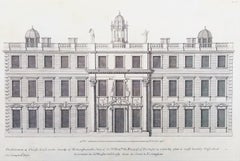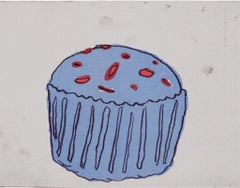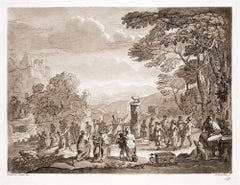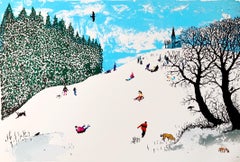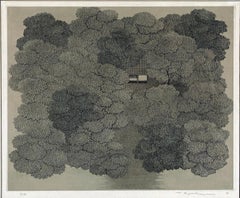Small Landscape Prints
1710s Old Masters Landscape Prints
Laid Paper, Engraving, Etching, Intaglio
1940s Contemporary Landscape Prints
Woodcut
1990s Contemporary Abstract Prints
Etching, Aquatint, Lithograph, Screen
1810s Old Masters Figurative Prints
Etching, Aquatint
21st Century and Contemporary Contemporary Landscape Prints
Paper, Screen
1960s Landscape Prints
Etching
1860s Landscape Prints
Etching
20th Century Modern Landscape Prints
Lithograph
1970s Abstract Abstract Prints
Woodcut, Monoprint
1960s Modern Figurative Prints
Lithograph
Mid-20th Century Contemporary Figurative Prints
Etching
21st Century and Contemporary Pop Art Portrait Prints
Paper, Screen
16th Century Figurative Prints
Etching
1820s Victorian Landscape Prints
Etching, Intaglio
Early 18th Century Landscape Prints
Lithograph
1960s American Modern Landscape Prints
Woodcut
1770s Baroque Landscape Prints
Etching
Mid-20th Century Impressionist Landscape Prints
Paper, Color Pencil, Drypoint, Lithograph
1960s Abstract Prints
Lithograph
2010s Contemporary Landscape Prints
Watercolor, Pencil
1720s Landscape Prints
Paper
2010s Street Art Portrait Prints
Screen
1920s Landscape Prints
Lithograph
Late 19th Century Victorian Landscape Prints
Lithograph
21st Century and Contemporary Contemporary Landscape Prints
Paper, Screen
21st Century and Contemporary Contemporary Landscape Prints
Linocut
2010s Pop Art Landscape Prints
Screen
1710s Old Masters Landscape Prints
Laid Paper, Engraving, Etching, Intaglio
1930s Landscape Prints
Aquatint
1710s Old Masters Landscape Prints
Laid Paper, Engraving, Etching, Intaglio
21st Century and Contemporary Contemporary Landscape Prints
Paper, Screen
1990s Abstract Geometric Figurative Prints
Screen
1930s Vienna Secession Landscape Prints
Archival Paper
Early 1900s Vienna Secession Landscape Prints
Paper
Early 20th Century Modern Landscape Prints
Drypoint, Etching
1970s Realist Figurative Prints
Engraving, Etching
1970s Landscape Prints
Lithograph
2010s Landscape Prints
Etching, Monotype
1970s Contemporary Landscape Prints
Lithograph
1890s Art Nouveau Figurative Prints
Lithograph
Mid-20th Century Surrealist Landscape Prints
Lithograph
Late 20th Century Realist Landscape Prints
Lithograph
Early 1900s Vienna Secession Landscape Prints
Paper
1960s Modern Landscape Prints
Lithograph
1950s Modern Landscape Prints
Lithograph
2010s Contemporary Landscape Prints
Paper, Screen
Early 1900s Vienna Secession Landscape Prints
Paper
Mid-20th Century Surrealist Landscape Prints
Lithograph
1970s Pop Art Landscape Prints
Lithograph
1920s Landscape Prints
Lithograph
1990s Pop Art Figurative Prints
Offset
2010s Contemporary Landscape Prints
Paper, Screen
1920s Impressionist Figurative Prints
Etching
Early 1900s Vienna Secession Landscape Prints
Paper
1970s Abstract Expressionist Abstract Prints
Lithograph
1870s Landscape Prints
Drypoint, Etching
1840s Modern Figurative Prints
Lithograph
1840s Modern Figurative Prints
Lithograph
1830s Modern Figurative Prints
Lithograph
1830s Modern Figurative Prints
Lithograph
